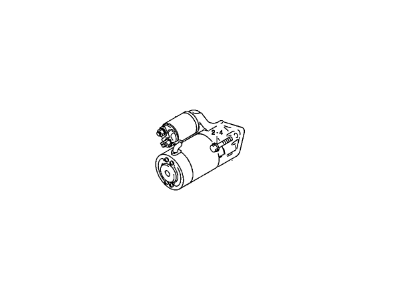
My Garage
My Account
Cart
Genuine Chevrolet Tracker Starter
Starter Ignition- Select Vehicle by Model
- Select Vehicle by VIN
Select Vehicle by Model
orMake
Model
Year
Select Vehicle by VIN
For the most accurate results, select vehicle by your VIN (Vehicle Identification Number).
6 Starters found
Chevrolet Tracker Starter
The Chevrolet Tracker's Starter is a part that takes power from the battery, mostly the electrical, and converts it to mechanical, which cranks the engines. it is driven by an externally mounted solenoid which draws its power from the battery to crank the starter motor. In the starter, a rotating armature works in series with field coils or permanent magnet while a drive gear mashes with the engine fly wheel when the ignition is on. A part of this system consists of safety devices that include a neutral safety switch for automatic transmission and a clutch switch for the manual transmission. There has been use of different types of starters in Chevrolet Tracker vehicles, with gear reduction starters providing efficiency through use of a reduction gear to the drive. OE starters are made to fit stock engines, but if the engine is modified for higher torque then a special starter may be needed to avoid failure. The improvement in starter technology highlights this situation and especially for racing engine that require very high compression ratios.
Each OEM Chevrolet Tracker Starter we offer is competitively priced and comes with the assurance of the manufacturer's warranty for the part. Furthermore, we guarantee the speedy delivery of your orders right to your doorstep. Our hassle-free return policy is also in place for your peace of mind.
Chevrolet Tracker Starter Parts Questions & Experts Answers
- Q: How to diagnose and troubleshoot starter problems on Chevrolet Tracker?A:Before diagnosing starter problems, ensure that the battery is fully charged. Check shift lever/clutch pedal. Clean and secure cables. If starter motor spins but engine doesn't crank, replace starter motor. If solenoid clicks but motor doesn't operate, check battery, solenoid contacts, motor, or seized engine. If solenoid plunger can't be heard, check battery, fusible link, or solenoid. To check solenoid, connect jumper lead between battery and ignition switch wire terminal. If motor operates, solenoid is fine. If not, check ignition switch, neutral start switch, or wiring. If motor still doesn't operate, remove for testing and repair. If motor cranks slowly, check battery and connections. If engine is seized or has wrong oil, it may crank slowly. To test motor, run engine until normal temp, disconnect coil wire, ground it, connect voltmeter to battery posts, crank engine, take readings. 9 volts or more with normal speed is normal. Less than 9 volts with slow speed may indicate burned contacts, bad motor, discharged battery, or bad connection.















